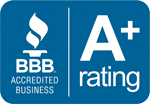While 69% of workers are confident they will be able to fully retire with a comfortable lifestyle, just three in 10 actually have a written financial strategy for retirement, according to the 22nd Annual Transamerica Retirement Survey.
Despite the confidence, 63% of workers agree with the statement, “I do not know as much as I should about retirement investing.”
Preparing financially for retirement requires dedication, planning and education on your options and what you will need to retire and maintain your current lifestyle.
Start with a needs assessment
Workers surveyed by Transamerica estimated they would need $350,000 (median) by the time they retire, in order to feel financially secure.
Estimated needs vary by employment status. The following are the average (mean) estimates:
- Self-employed workers estimate they will need $500,000.
- Employed workers estimate they will need $400,000.
- Unemployed workers estimate they will need $100,000.
- 17% of workers estimate they will need to save $2 million or more.
Despite that, just 3% say they have a plan for their retirement savings, but it’s not written down anywhere. Further, few of these plans take taxes, long-term care needs or total savings and income needs into account.
Currently, only about 35% of those surveyed use a professional financial advisor.
Top concerns
According to Transamerica’s researchers, the main concerns workers have are:
- Outliving their investments.
- Needing long-term care or nursing home care.
- Reduction in Social Security benefits.
- Not being able to meet the financial needs of family.
- Cognitive decline/dementia/Alzheimer’s disease.
- Lack of access to adequate health care.
Fully 70% of respondents believe that Social Security benefits will not be there for them when they retire.
How to take charge
- First, take advantage of as much “free” retirement money as you can. If you can do nothing else, contribute enough to your 401(k) plan to pick up any employer matching contributions.
- Visit with us to discuss your retirement income needs, planning and other concerns. Studies show that go-it-alone investors underperform the market by substantial margins.
- Stay healthy. Healthy people have lower medical expenses, and, of course, are in a better position to stay in the workforce than people with serious health problems.
- Purchase long-term care insurance and/or disability insurance when you are still healthy.
- Contribute as much as you can to your workplace retirement plan, and/or your own IRA or Roth IRA. If you are age 50 or over, and you meet the income requirements to contribute, you may be eligible for an additional $1,000 per year in catch-up contributions to an IRA, or another $7,500 annually in catch-up contributions to a 401(k) plan.
- If you are a business owner, you can start your own SEP IRA or 401(k) plan. You may also be eligible for a small business retirement plan tax credit to get started. Contact us for more information.




